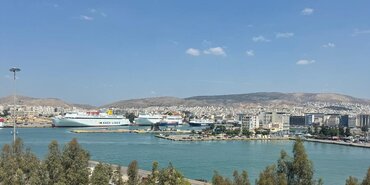Underwriters fall out with expert witness over valuation of fire-damaged vessel
ITIC has reported a case in which hull and machinery insurance underwriters commenced proceedings against a marine consultancy firm for alleged negligence in failing to properly review shipyard quotes in respect of the cost of repairing a fire-damaged vessel.
The insured vessel had suffered extensive fire damage. The owner claimed that the ship was a Constructive Total Loss (CTL) (the cost of repairing it would be in excess of its insured value). The insurers rejected this contention, maintaining that the vessel was capable of economic repair. The vessel was ultimately scrapped, and a dispute over the amount the insurers were obliged to pay under the policy arose.
At an early stage, the owner made an offer to settle the claim by stating that they would accept $1.136m, plus their legal costs. Underwriters rejected the offer, and owners commenced litigation. The underwriters engaged a marine consultancy firm to provide expert advice/evidence on what it would have cost to repair the vessel. The consultants issued a report stating that the vessel was not a CTL. This report was based, in part, on two independent quotations from Chinese shipyards and detailed calculations from the builder of the vessel which indicated that the steel weight for the vessel’s accommodation block was 312 tonnes which had been provided by their client.
The owner in turn submitted the report of their technical expert, which had been prepared using a different, ‘newbuild’ approach. This report used an estimated steel weight total of 542 tonnes to repair the accommodation block, and concluded that the total cost of repairing the vessel was $6m, a figure that would have made the vessel a CTL. Following a joint experts’ meeting, underwriters’ counsel asked their consultant to prepare their own steel weight calculations, inclusive of the accommodation block, in order to rebut the owner’s report. Drawing from their own calculations, the underwriter’s consultants concluded that the shipbuilder’s initial steel weight figure was inaccurate and that the cost of repairing the vessel was in fact $3.9m in excess of the total insured value. On the basis of this new advice, underwriters settled with the owner for $1.3m, plus the owner’s costs.
Underwriters then commenced proceedings against their consultant on the basis that they had been negligent in failing to properly review the shipyard quotes. Underwriters claimed that had they been properly advised initially, they would have been able to settle for a lower amount at an earlier stage. This would have also reduced their own costs and their liability for the owner’s costs.
The consultants pointed out that the underwriters had rejected the owner’s earlier offer before they had even been engaged and argued that, for their part, they had relied on the Chinese shipyard’s calculations, which were provided by the underwriters. Moreover, it was not until after the joint experts’ report that they were asked to make their own assessment.
Reporting that the issue was finally settled at mediation for £305,000 and an agreement that both parties bear their own costs, ITIC says, “It is seven years since the English Supreme Court held that expert witnesses involved in legal proceedings no longer enjoy protection from liability for negligence. It was a feature of this dispute that there was no document specifying what the consultants had been engaged to do. A large number of disputes involving consultants and other advisers would be avoided if the scope of work was clearly defined beforehand.”
- Date
- 28/11/2018





